Heritage Craft School for Crippled Children, Chailey, Sussex
The Heritage Craft School for Crippled Children was established in 1902 by Grace Kimmins and the following year moved into premises at North Common, Chailey, which had recently been vacated by the Chailey Industrial School. The Chailey School was an extension of Mrs Kimmins earlier endeavours in London — the Guild of the Brave Poor Things (founded in 1894) and the Guild of Play. The School aimed to provide medical treatment, education and training in craft skills for physically disabled children, with the aim of allowing them to support themselves in later life. The establishment originally admitted only boys but from 1908 also admitted able-bodied girls who were trained for domestic service.
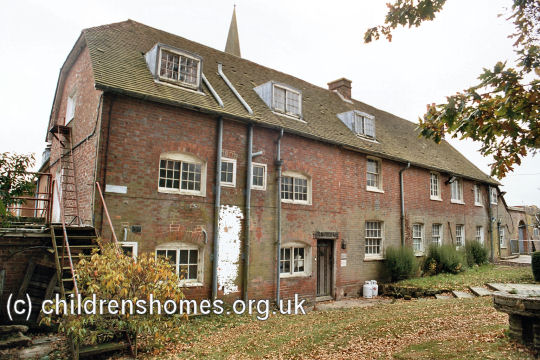
Heritage Craft School original buildings from the north-east, Chailey, 2000. © Peter Higginbotham
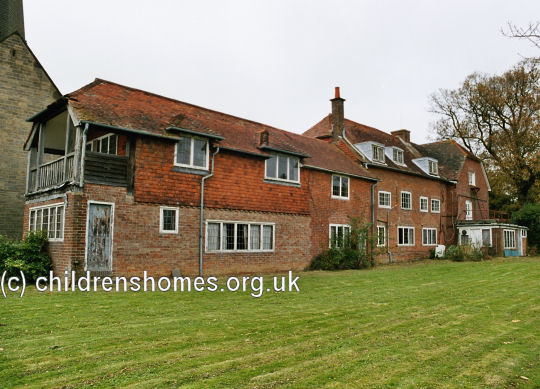
Heritage Craft School original buildings, Chailey, 2000. © Peter Higginbotham
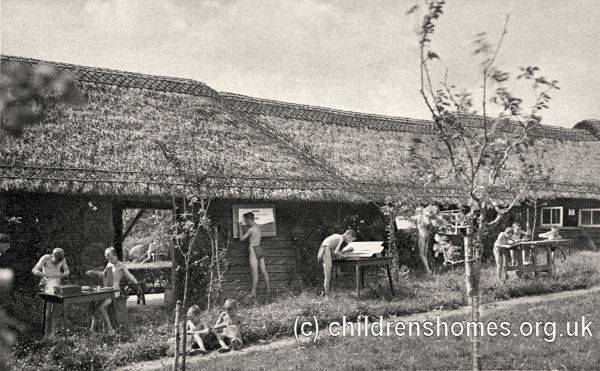
Boys at Chailey Heritage Craft School, date unknown. © Peter Higginbotham
The buildings at North Common had originally served as the Chailey parish workhouse and were relatively little altered during their use as an Industrial School. Under the Heritage Craft Centre's occupancy, money was raised to extend the buildings and make the site more amenable for those with disabilities. In 1913, the School Chapel was opened, and work begun on the Hospital School of Recovery for Little Children. Accommodation was also created for use as a holiday home for London children. With the growth in its medical facilities, the site became known as The Heritage Craft Schools and Hospitals for Crippled Children.
The School site is shown on the 1931 map below.
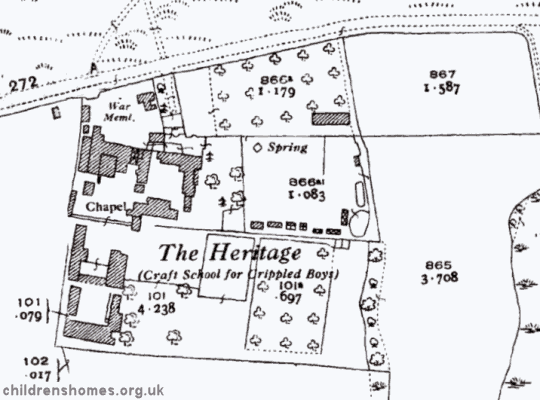
Chailey Heritage Schools site, c.1931.
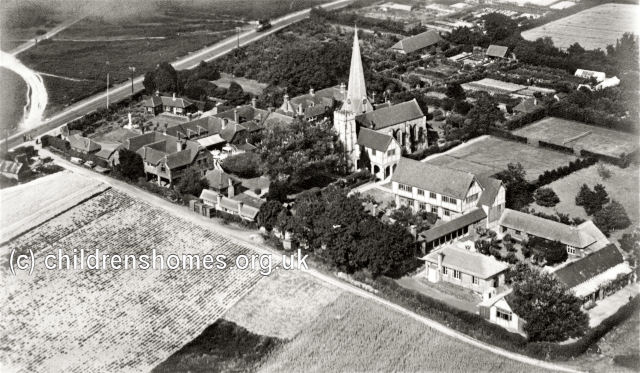
Chailey Heritage Craft School aerial view from the south-west, date unknown. © Peter Higginbotham
During the First World War, the School was partly turned over for use as a convalescent hospital for wounded and disabled soldiers and known as the Princess Louise Military Hospital. The soldiers learned from the children at the establishment ways to deal with lost or severely damaged limbs and to develop new skills such as agricultural work and toy making, as well as artistic pursuits such as painting. New wooden buildings were erected to accommodate the soldiers, with the children assisting with their construction. After the Hospital ceased receiving military casualties in 1920, it was reopened as the Princess Louise Special Pensioners Hospital and continued with similar work.
In September, 1912, the boys section of the establishment became a certified Special Industrial School allowing it to receive physically disabled children committed by magistrates to a period of detention. The girls' section was included in the certificate from March, 1922. The School resigned its certificate in June 1932.
During part of the Second World War, the hospital section was taken over as part of the Emergency Medical Service and worked with 'blitzed babes'.
In 1948, the medical facilities at the site became part of the newly formed National Health Service.
Educational and medical services for young people with complex physical disabilities and health needs continue to develop at the site, run by the Chailey Heritage Foundation.
Records
Note: many repositories impose a closure period of up to 100 years for records identifying individuals. Before travelling a long distance, always check that the records you want to consult will be available.
- East Sussex Record Office, The Keep, Woollards Way, Brighton, BN1 9BP. Has extensive holdings including Admission and discharge registers (1903-45)
Bibliography
- Kimmins, Grace Heritage Craft Schools and Hospitals, Chailey, 1903-1948: Being an account of the pioneer work for crippled children (1948, Baynard Press)
Links
Except where indicated, this page () © Peter Higginbotham. Contents may not be reproduced without permission.


